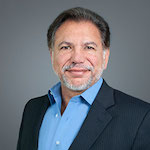Adult Stem Cell Therapy & Platelet Rich Plasma
MLB Pitcher Chose PRP Over Surgery
 Miami baseball fans may recognize the name Colin Rea, the MLB pitcher who recently sustained an injury to his elbow. As he explained to reporters, “Every pitcher kind of goes through some soreness here and there throughout the season… For me, that’s what it was. It wasn’t anything more. It was something I was able to throw through. It didn’t bother me at all. Then, obviously, in the start on Saturday, it just got a lot worse in those last couple innings to the point where I couldn’t throw anymore.” Rea has struggled to perform at his best for a long time due to his elbow injury, and he is now finally pursuing a reliable treatment to regain his health.
Miami baseball fans may recognize the name Colin Rea, the MLB pitcher who recently sustained an injury to his elbow. As he explained to reporters, “Every pitcher kind of goes through some soreness here and there throughout the season… For me, that’s what it was. It wasn’t anything more. It was something I was able to throw through. It didn’t bother me at all. Then, obviously, in the start on Saturday, it just got a lot worse in those last couple innings to the point where I couldn’t throw anymore.” Rea has struggled to perform at his best for a long time due to his elbow injury, and he is now finally pursuing a reliable treatment to regain his health.
Many pitchers with Rea’s injury undergo a “Tommy John” surgery, also known as an ulnar collateral ligament (UCL) reconstruction. That surgery involves extracting a healthy tendon from an arm or even a leg in order to replace a torn ligament in the arm. Holes are drilled into the bone above and below the elbow, and the healthy tendon is threaded through those holes. Rea wasn’t sure about the Tommy John surgery, so he sought a few second opinions. In the end, he decided to forego surgery in favor of the far less invasive option of PRP injections.
The Power of PRP
Platelet-rich plasma is actually created from a patient’s own blood. The blood is placed in a centrifuge, which creates plasma with more concentrated platelets. Platelets contain critical growth factors and small proteins that stimulate the body’s natural healing process, especially the rapid healing of traumatized tissue. When injected into the injured part of the body, PRP triggers the healing process and helps to regenerate damaged tissue.
By choosing PRP to alleviate his elbow condition, Rea has reduced his recovery time from an entire year to no more than a month or two. He has also eliminated the need for surgery and all of the risks it entails. It’s no wonder that sports superstars like Kobe Bryant and Chris Davis have also relied upon PRP to save their bodies—and careers.






